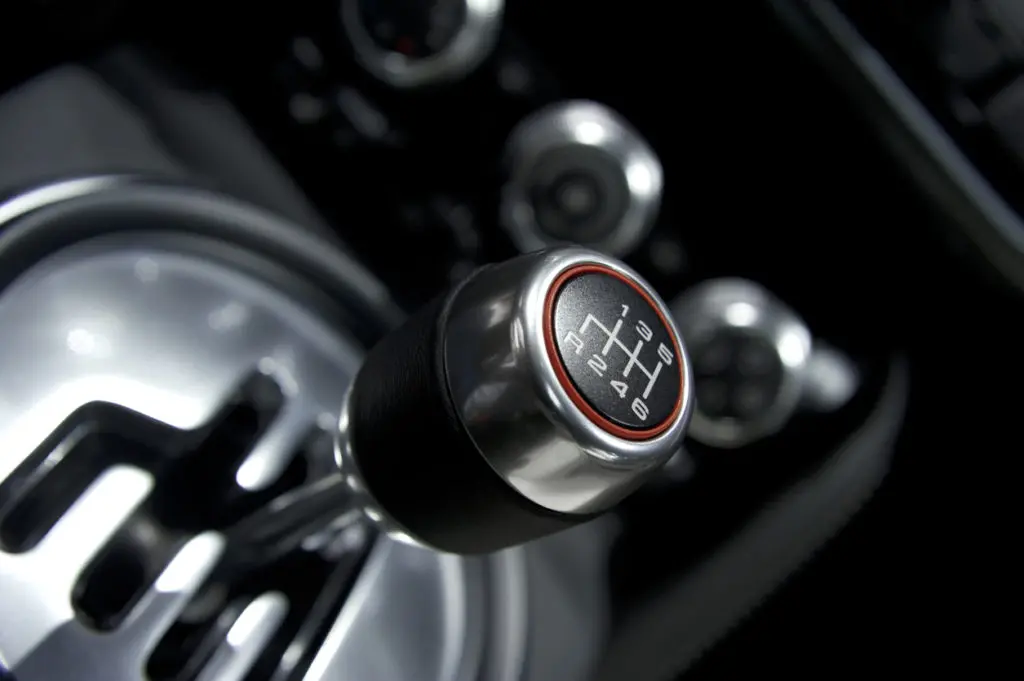

When the first automobile was built, the tiny engine was connected directly to the driveshaft. It worked, but the Benz Patent Motorwagen offered a slow and jerky ride. The vehicle would lurch forward as soon as the single drive belt was engaged, and speed was slightly variable, depending on engine speed, but going even faster would damage the engine. Still, since the engine was so small, it was an acceptable compromise.
Eventually, with the development of more powerful engines, multiple gear ratios were required, reducing the jerky takeoff and enabling higher speeds and even a reverse gear. Additionally, because the internal combustion engine is most-efficient and most-powerful at different speeds, multiple gear ratios are necessary to extract the most usable power or best fuel economy, depending on driver demand.
The Benz Patent Motorwagen had a single-speed manual transmission with no reverse, but most of today’s manual-transmission vehicles are equipped with at least four or five forward gear ratios, and some vehicles are available with six- and seven-speed manual transmissions.
Basically, a manual transmission is a gear box that enables the driver to choose between different gear ratios to drive the car. Lower gear ratios offer more torque, but less speed, while higher gear ratios offer less torque, but higher speed. Different gear ratios are often referred to as “speeds,” so a “six-speed” manual transmission has six forward gear ratios.
At its simplest, the manual transmission consists of three shafts with constantly-intermeshed gears of different sizes. The input shaft connects to the engine, via the clutch. The countershaft is constantly meshed with the input shaft and has multiple gears. The output shaft connects the countershaft to the driveshaft and eventually the wheels. In four-wheel drive and all-wheel drive vehicles, the output shaft connects to the transfer case first. Reverse gear is usually on a fourth shaft to effect a change in direction.
The gears themselves are not fixed to the output shaft, but freewheel. Locking collars, on the other hand, rotate with the output shaft and can shift or slide back and forth to engage one of the gears. That’s why we call it “shifting” gears. In “neutral,” with no gear selected and the clutch released, the input shaft and countershaft are spinning, as are the output shaft gears, but the output shaft doesn’t move because none of the locking collars are engaged.
To effect a gear change, selecting first gear, for example, the driver depresses the clutch, disengaging the input shaft. Using the shift lever, the driver selects first gear, and the linkage moves the shift fork to connect the 1 st -2 nd locking collar with 1 st gear, locking it to the output shaft. Now, when the clutch is released, engaging the input shaft, the output shaft turns because 1 st gear is locked to the output shaft by the locking collar.
As the driver speeds up, selecting 2 nd gear simply involved repeating the process, but moving the shift lever to 2 nd gear. The shift shaft moves the shift fork to disengage 1 st gear and engage 2 nd gear. Releasing the clutch engages the input shaft again, this time routing power through 2 nd gear. Changing to 3 rd gear involves using a second shift linkage, shift fork, and locking collar, this one between 3 rd and 4 th gears.
Because the countershaft and output shaft turn at different speeds, moving from 1 st to 2 nd gear, trying to engage a higher gear while the vehicle is moving slower would be like trying to turn the shaft at two different speeds, which is impossible. Synchronizer rings are like tiny clutches, using friction to bring the locking collar and the gear to the same speed, at which point they easily mesh and power can be reapplied.
In comparison to an automatic transmission, a manual transmission is simple in operation and maintenance, and they are known to last hundreds of thousands of miles. Really, the only thing a manual transmission needs is an occasional gear oil change – usually every 30,000 to 60,000 miles, depending on conditions and driver habit. If you drive a work truck, race car, or are just an aggressive driver, you might need to replace manual transmission gear oil as often as every 15,000 miles. Because manual transmissions don’t heat up as much, the gear oil doesn’t degrade, but it does pick up particles from the gears, bearings, and synchronizers. Since manual transmissions don’t have filters, some of those particles simply float around to get stuck in other places and cause wear.
Driving responsibly is the single best way to help your clutch and manual transmission last. Unless you’re taking off on a hill, don’t ride the clutch. When you have your foot on the clutch, it wears on the clutch release fingers and the throwout bearing. When decelerating, fully engage and disengage the clutch to downshift. Riding the clutch just heats it up and wears it out. To help your clutch last even longer, learn to rev-match while downshifting. This takes practice, but increasing engine speed slightly while engaging the clutch in the lower gear reduces shift shock through the whole powertrain, and everything from bushings to clutch and driveline will last longer.
As long as manual transmissions are around, and we’re guessing for decades to come, you’ll need to count on professionals such as Dobbs Tire & Auto Centers keeps on staff. If you need basic maintenance or you’re experiencing problems, stop in or call one of our 43 locations in the St. Louis area. Put our experience to work for you.